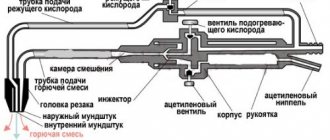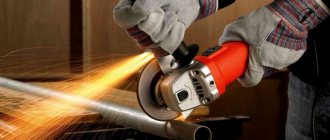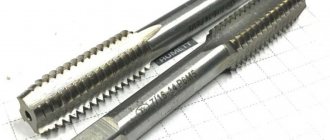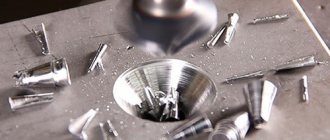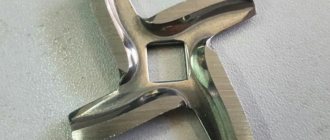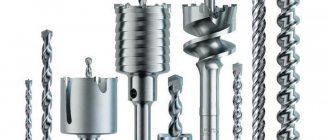When replacing metal pipes, situations often arise when you need to cut threads to connect individual parts of the pipeline. To make a high-quality joint, a thread-cutting tool is used. It is important to understand what types of this equipment there are and how threads can be made so that, if necessary, you can carry out repair work yourself.
Threading tool
Varieties
To choose one of the types of threading tools, you need to understand what types of threaded connections there are:
- Cylindrical and conical threads.
- Multi-start - consisting of several helical lines.
- Single-thread - consisting of one helical line.
Pipe threads can be made by rotating the tool to the right or left. The direction depends on the selected tool.
Power tools
You can find a large selection of electric tapping tools in hardware stores. The equipment allows you to increase the efficiency of human labor and increase productivity. Additionally, the quality of the work performed increases. Modern power tools allow you to create different types of carvings and work in hard-to-reach places. There is a special vice to secure the surfaces to be processed on the tool.
However, it is important to remember that power tools overheat quickly. Therefore, coolants must be used during operation.
Hand tools
Hand taps can be a separate accessory for power tools or attached to hand held fixtures. A hand tool consists of a handle and a body for securing the die. They can be single or symmetrical (depending on the type of thread being created). Two-piece tools can be equipped with a ratcheting mechanism for ease of use and convenience.
General information about threading
When choosing a tool for cutting threads, you should take into account the characteristics of the threaded surfaces. These include the following points:
- The cutting of turns is carried out mechanically using special equipment. When metal is removed, grooves and coils are formed that fit perfectly with the surface of the second element.
- All thread cutting tools and technologies used can be divided into two categories: manual and automated. For a long period, screw-cutting lathes were used.
- When using hand tools for thread cutting, lubricant must be used. It significantly extends the service life of devices and simplifies the threading process itself.
Thread cutting with different types of dies
It is worth considering that manual versions have an internal surface, which determines the size of the turns and their location. In the case of processing on a screw-cutting lathe, the parameters of the future threaded surface are determined by the feed and speed of movement of the caliper.
Ways to create a helix
To create threads, fastening threads and longitudinal grooves, you can use various devices and equipment. To make a quality connection, you need to know how to use certain devices.
Thread taps
Die
The die is used to create threads on metal pipes. The process of repair work:
- Places of future connection must be cleaned of dirt, paint, rust, and plaque.
- Remove the chamfer located at the ends of the pipe.
- Select a die of the required diameter and lubricate its teeth with special oil. Use it to treat the place where the carving will be.
- Make 6 turns of the die. In this case, you can do reverse scrolling to free the working surface from accumulating chips.
- Remove the die, clean it of chips, lubricate the teeth and pipe with oil. Repeat the procedure.
If the pipes are old, they must first be checked for defects. If there are cracks or holes, the product cannot be processed.
Klupp
It is a special thread-cutting tool for creating external threads. Work process:
- It is necessary to remove a layer of dirt, rust, and paint from working surfaces.
- Try to secure the workpiece in a stationary position.
- Apply drying oil to the work surface.
- Unscrew the support screws from the clamp and place it on the pipe.
- Attach the cutting dies and secure the structure with screws.
- With forward pressure, rotate the die clockwise.
Before removing the clamp, you need to squeeze out the dies.
With a cutter
This option for making threads involves the use of turning equipment. The master secures the pipe into the spindle. After this, he fixes the cutter in the support and adjusts it. After turning on the electric motor, the workpiece begins to rotate. The master slowly brings it to the cutter and begins processing.
Tap
Taps are used to create internal threads. Use of taps:
- The product is fixed in a vice.
- The diameter of the tap is selected. It is secured in a special device - a collar.
- It is necessary to make two turns clockwise and half a turn in the opposite direction. This will prevent chips from getting stuck between the cutting teeth.
If a ductile metal alloy is used, you can use a screwdriver into which the tap is secured.
Before using taps, it is necessary to calculate the diameter of the future hole. There are certain tables for this that can be found on the Internet. For example, if the outer diameter of the pipe is 10 mm, then the hole should be 1 mm smaller.
Electric thread cutter
You need to use power tools carefully so as not to damage the surface being processed. Work process:
- Cut the pipe at a 90 degree angle.
- A support bracket is installed under the pipe.
- The working surface is covered with coolant.
- The guide lever is located.
- Next, you need to turn on the thread cutter and press it against the workpiece.
- Coolant must be supplied during operation.
To remove the cutting tool, reverse gear is engaged.
Classification
The division of dies into types is carried out according to many criteria. We will name only the most frequently used ones.
Design. According to this criterion, the dies are:
- round. Most widely used. The design is a solid ring, along the inner ridges of which the workpiece passes. This tool is characterized by high rigidity. Thanks to this property, high-quality threads with turns with a good profile are obtained;
- sliding (square). The design of such dies includes two parts. And the workpiece is fixed when they are connected. Setting the required diameter of the thread knurling is done by moving one of the parts of the die along the guides of the die (this is another name for the die holder);
- Split. They are used in case of low requirements for the quality of thread knurling.
Thanks to the existing radial cut, such a die has shock-absorbing properties. As a result, the cutting area is subject to less wear. But the end result is a thread of low precision. Its run-up (designation P) fluctuates in the range of 0.1 mm≤P≤0.3 mm;
Thread knurling direction. Dies can cut the following types of threads:
- right The thread is knurled in a clockwise direction. Such threads are present on most types of rod fasteners;
- left. The knurling direction is opposite to the clockwise movement. Used much less frequently. In particular, where the right-hand thread can unwind, in mechanisms that differ in the specificity of rotation, and in special components of vehicles. Such dies are marked with English letters LН;
Thread profile. Based on this feature, tools for cutting external threads, that is, dies, come in the following types:
- metric. As the name suggests, they are designed to form metric thread knurls. The designation in technical literature includes the letter M, followed by a figure or number indicating the thread diameter in millimeters. The values of this parameter (designation d) for round dies are approved by GOST 9740-71. They can vary in the range of 1.0 mm≤d≤68.0 mm;
- cylindrical pipes. Easily identified by the letter “G” present on the body. The unit of measurement for the threads they form is inch (indicated by a double stroke “″”). Its ratio to a millimeter looks like this: 1″ = 25.4 mm. The tool marking “G1/4” indicates that we are looking at a die for cutting quarter-inch pipe threads. Diameter change range – G1/8″≤d≤G2″;
- pipe conical. Marking with the letter “K” will prevent them from being confused with other types of such instruments. Used when it is necessary to obtain a threaded surface of a conical configuration. Scope of application – machine components, as well as critical connections operating under high pressure conditions;
- trapezoidal. The cross section of the turns has the shape of an equilateral trapezoid. Scope of application: power couples that convert rotational motion into translational motion. The simplest example is the combination of a lead screw and a nut, which are equipped with bench and machine vices.
Requirements for using the device
Before you start working with a power tool to create threads, you should familiarize yourself with certain requirements:
- When working with old pipes, you need to use a gas wrench to hold them.
- Before turning on the equipment, you need to clean the cutting part from old chips. The same applies to the surface being treated.
- Check the direction of rotation of the dies in advance.
- Use coolant during operation.
Before using a power tool, it is necessary to chamfer the end of the pipe.
Threading tool with gas wrench
Shaped cutters for thread cutting
When using turning and screw-cutting equipment for thread cutting, you should select the most suitable cutter. Manufacturers produce special versions of cutters for thread cutting, which are characterized by their specific features:
- During production, a cutting part of a certain shape is created. Due to this, a groove of the required shape is formed.
- The cutting part is made of tool steel, which is hardened. Due to this, the possibility of rapid wear of the cutting edge is eliminated during operation.
- The use of the method under consideration makes it possible to process the surfaces of large workpieces.
In production shops, a screw-cutting lathe is often used, since there are practically no dies and taps for working with large-diameter workpieces. In addition, when threading, a serious load arises.
Marriage and its reasons
There are several reasons why a workpiece may be rejected:
- Lack of coolant.
- The craftsman did not chamfer before starting to cut the thread.
- Using faulty equipment.
- Dull or damaged teeth on the cutting tool.
Do not use excessive force when working with hand tools.
A thread-cutting tool allows you to independently create reliable connections between metal pipes and other parts. Knowing the types of accessories and equipment, you can easily select a device and easily carry out repair work. If you follow the basic rules for working with a tool, you can reduce the number of defects.
Thread cutting tool
The threaded type of connection is the most widely used today. It is used in mechanical engineering and other areas of production, is characterized by high reliability and ease of manufacture. If desired, you can cut the coils using special tools, which are characterized by practicality and versatility in use.
Types and properties of cutters
A metal turning tool consists of a holder and a working head. The quality of parts processing directly depends on these elements. The holder has a rectangular or square cross-section. With its help, the cutter is fixed on the lathe.
The working head is used to process parts. It is composed of various cutting planes and edges. The sharpening angle of the head is determined by the material from which the part is made.
External and internal threads are cut using different types of thread cutting tools.
Threading cutters
The most used ones:
- rod;
- prismatic;
- round.
Rod cutters consist of a rod with a working head. These types come in different profiles. The most wear-resistant are cutters to which carbide working edges are soldered. They do not need frequent sharpening as they remain sharp for a long time.
Prismatic cutters are used to process only the outer side of the blank. Their advantage over rod ones is their ability to process large surfaces. But they should be sharpened more often.
Round cutters are used in the process of cutting internal and external threads. These tools are very easy to use and their scope of use is quite wide. Round cutters allow repeated sharpening.
Round thread cutters
Based on their design differences, metal-cutting tools are divided into several types:
- straight;
- curved;
- bent;
- drawn out.
The top of any threading tool is a rounded head or chamfer. The thread profile is formed by a cutter of the proper configuration. Using curved cutting tools, the threaded thread is cut on the surface of the blank.
Straight incisors are rarely used here. The carving inside the part is made with curved cutters, sometimes straight, fixed in a special holder.
Cutters are divided into categories:
- made of high-speed alloy steel;
- with carbide plates soldered onto the working element;
- cutting devices with replaceable multifaceted inserts mounted on the head.
According to the direction of the screw thread, the tools are differentiated into right-handed and left-handed. When working first, the feed goes from left to right, when working second, the feed goes to the left. The right ones use it more often.
Cutting the thread with a die
Threaded dies for increased productivity
Some thread cutting tools are characterized by high efficiency when used. An example is thread dies, which can be used to produce threads of almost any size. Their advantages include the following:
- Simple design.
- Versatility in use.
- High efficiency.
- Manufacturability.
The combs are represented by multi-filament shaped cutters, which are of prismatic, round and rod type. Most often they are used for cutting threads with fine pitches and low profile heights.
Taps, dies and heads for thread cutting
The most widely used hand tools are for thread cutting. They can be used in industry and everyday life.
The most widely used versions are:
- Similar tools are used to make bolts and studs. Such a product is a round washer, inside of which several ribs protrude. External threads can be formed and calibrated in just one pass. There are various versions of tools on sale; hardened tool steel is used in manufacturing.
- Taps are used to produce internal threads. It is also manufactured using hardened tool steel, which is characterized by high wear resistance. The tap has the shape of a rod, the working part of which has several depressions and protruding edges. Due to this, the thread cutting process is significantly simplified.
- Special heads can also be used to carry out the work in question. They can have different sizes and are used in conjunction with a special holder.
The cost of hand tools is low, but they are characterized by high efficiency in use.
Clupp work
To carry out the work in question, a clamp can be used. It resembles a die, but is large in size. It is often used for cutting threads on pipes and is supplied in special sets with handles. Among the application features we note:
- The clamp is characterized by high efficiency, so the process of cutting turns is simplified.
- The instructions for using the die and die are almost identical, the only difference is how much force needs to be applied to obtain the required result.
A thread cutting kit is often represented by a combination of nozzles of various diameters. In the manufacture of the working part, wear-resistant material is also used, which does not dull during prolonged use.
Decoding the writing of threads
Regulatory documents: GOST, OST, MN for a specific type contain samples of conditional recording.
Graphic materials are designed in accordance with the instructions of GOST 2.311-68 “Image of threads”.
A typical designation structure contains:
- the literal part defining the type;
- numbers corresponding to the nominal size in millimeters or inches;
- pitch (mm) is indicated only as fine, after the “×” sign;
- for multi-start ones, instead of the previous paragraph, the stroke (mm) is given, then the step in parentheses;
- direction: right is the default, left is LH;
- tolerance range or accuracy class;
- make-up length other than normal.
Example 1: М16×1.5LH–6H. Explanation:
- M – metric cylindrical;
- 16 – nominal diameter, mm;
- 1.5 – fine pitch, mm;
- LH – left;
- 6Н – tolerance range, where 6 – degree of accuracy; H – main deviation. Capital letters are used for internal (nuts), hence the threads in the hole.
The screw-in length is not indicated, which means it is normal.
Example 2: G1/2–A
- G – cylindrical pipe;
- 1/2 – thread size, inches; corresponds to the internal diameter of the pipe;
- A – accuracy class.
The designation options are illustrated below.
Features of external thread cutting
Threads are grooves of various geometric shapes, cut with special tools - dies, thread cutters, taps and grinding wheels. The thread is applied either manually or using a lathe and cutter.
• method of cutting with a die and tap
A tap is a screw with straight and helical grooves, designed for cutting internal threads. The manual cutting method requires 3 taps: rough, for applying the initial thread, medium and finishing. The machine cutting method is carried out on lathes and milling machines. The dies are similar in shape and appearance to a nut; on the inside of the tool there are conical cutting teeth for cutting external threads. They are divided into round, square and hexagonal shapes. According to the design - solid, split and sliding. To ensure smooth passage of the die through the part, it is necessary to remove the chamfer.
• turning method
In production, threads are cut using a lathe and a special tool - a thread cutter. For each product, an individual indicator of the helical pitch is established; it is determined by measuring the distance between adjacent turns. The part is placed in a lathe, and as the workpiece rotates, the cutter moves along all axes, creating a helical surface. Based on their design features, thread cutters are divided into: prismatic, rod and round/disc. The thread profiles used are triangular, rectangular, trapezoidal, thrust and round geometric shapes.
